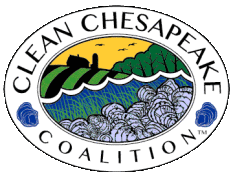History of the Coalition

In a state of sticker shock after being presented with their local WIP (Watershed Implementation Plan) and on behalf of their local taxpayers, the County Council of Dorchester County reached out to county government officials across the State of Maryland with an appeal to coalesce for purposes of questioning the public costs and efficacy of the myriad policies, programs and practices being mandated by the State and federal government in the name of saving the Chesapeake Bay.
What started in concept as the “WIP Coalition” and then the “TMDL (Total Maximum Daily Loads) Coalition” evolved into the “Clean Chesapeake Coalition” – when seven Maryland counties agreed in late 2012 to join forces to collectively pursue improvement to the water quality of the Chesapeake Bay in a prudent and fiscally responsible manner.
Here is a sampling of the “call to arms” which continues to resonate among local elected officials:
In the wake of historic State cuts in aid to local governments and the shift of significant financial obligations such as teacher pensions and highway maintenance from the State to the counties, the unrest among local elected officials in 2012 was palpable when confronted with crippling mandated expenditures purported to improve the water quality of the Chesapeake Bay.
Simply put, the costs associated with the Watershed Implementation Plans (WIPs) that all Maryland counties were required by the State to prepare and now implement are simply unaffordable.
Moreover, many of the State’s policies, programs, and practices that counties are required to fund in furtherance of the EPA’s Bay TMDL are of questionable benefit in terms of improving the water quality of the Bay. Local elected officials are the last line of defense in ensuring the most effective use of taxpayer dollars and with so much being foisted on the counties’ shoulders, it is up to local elected officials to prioritize.
New Priorities
The Phase III WIP for Maryland appears to have acknowledged the impracticable nature of Phase II and the comments CCC submitted reflect our members’ appreciation of this more collaborative approach.
This new WIP includes the owner of Conowingo Dam, Exelon, as one of the parties responsible for addressing the pollution that has built up in the reservoir and rushes into the Upper Bay when extreme weather conditions cause scouring as spill gates are opened.
The EPA is taking no enforcement action against Pennsylvania, whose Phase III WIP has been heavily criticized by downstream states and NGOs for being feckless on nitrogen reductions, underfunded and out of sync with PA county plans. The EPA gave another pass to the state (PA) with the largest pollution loads to account for within the Chesapeake Bay, which does not bode well for protecting Maryland’s ongoing efforts and investments downstream.
With EPA signing off on the Phase III WIPs, attention must now be focused on the Conowingo WIP to ensure that plan includes action to meaningfully address the Conowingo factor by way of sediment management and dredging what is already accumulated in the reservoir in order to regain trapping capacity.
Each jurisdiction developed goals based on midpoint assessment of progress and scientific analysis of water quality and other measurements. Actions outlined in Phase III will be implemented between 2019 and 2025. As a part of the review process, the Maryland Department of the Environment has called for the addition of a new jurisdiction specifically related to the Conowingo Dam and its environs.
The Coalition’s Overall Objective
The overall objective of the Clean Chesapeake Coalition is to pursue improvement to the water quality of the Chesapeake Bay in the most prudent and fiscally responsible manner. We believe that this collective purpose is consistent with the responsibilities of Maryland citizens and reflective of the feelings of most local elected officials.
Please see Our Mission to further understand the CCC’s current priorities.
Our research, analysis and advocacy thus far is of great use and benefit to everyone concerned with a healthy Bay. There is no doubt that we have raised attention in the flaws of the Bay clean-up agenda and the disproportionate fiscal impacts on Maryland local governments (read taxpayers).
There is sufficient momentum now it seems for Marylanders to embrace the cause; support the Coalition and know that your tax dollars will be spent wisely.
